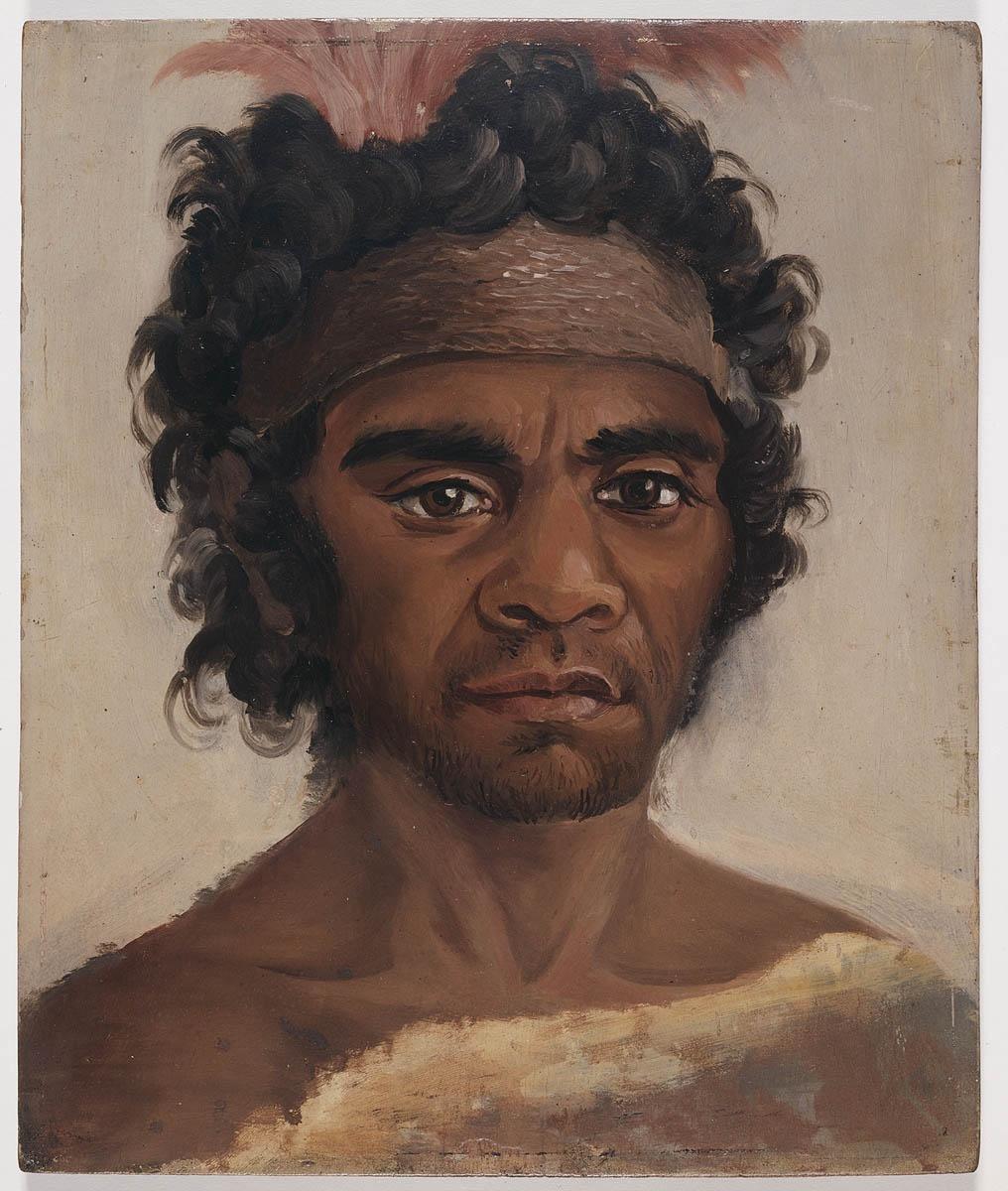This mysterious portrait of an unknown, handsome young Aboriginal man is believed to have belonged to Governor Lachlan Macquarie. The painting is by an unknown artist, created during the time Macquarie was Governor of NSW, sometime between 1810 and 1821. The painting was described as ‘One of the NSW Aborigines befriended by Governor Macquarie’.
Speculation about the possible identity of the subject reveals the complex, often contradictory, relationships Macquarie formed with local Aboriginal people. Macquarie was closely associated with Bungaree, the Eora man who had accompanied Matthew Flinders on his 1801–03 circumnavigation and mapping of the Australian continent. Bungaree was later given an inscribed breastplate by Macquarie, and allotted land at George’s Head on Sydney’s north shore, in 1815. This portrait is unlikely to be of Bungaree, who would have been much older when acquainted with Macquarie.
Another, perhaps well-intentioned but ultimately problematic act, was the opening of the Native Institution for children in Parramatta in 1814. Around the same time, Macquarie initiated the annual distribution of blankets and food to local Aboriginal people. These annual feast days at Parramatta were used to entice enrolment at the Institution, which was eventually closed in 1820 then reopened at Blacktown. Though contemporaries would have seen these as benevolent gestures, today we would recognise the role of such institutions in the removal of Aboriginal children from their communities.
The repatriation of three human skulls from the University of Edinburgh in 1991 reveals a more macabre side to the colonial government’s relations with the Indigenous people of NSW. Originally held in the collections of the Edinburgh Phrenological Society, one of the skulls has been identified as the Aboriginal man Cannabayagal who was hanged after the raid of an Aboriginal camp at Appin in south-western Sydney in 1816. A second skull is probably another Aboriginal man named Durelle, who was hanged alongside Cannabayagal. The remaining skull is that of an unknown Aboriginal woman.
The Appin massacre had occurred on the morning of 17 April 1816 when at least 14 Aboriginal men, women and children were killed by soldiers under the command of Captain James Wallis. A witness recalled that 30 shillings and a gallon of rum was paid for each of the three heads brought to Sydney. The military reprisals had been ordered by Governor Lachlan Macquarie.
Ronald Briggs
Curator/Indigenous Services Librarian, State Library of NSW
Sponsors
Works in Focus
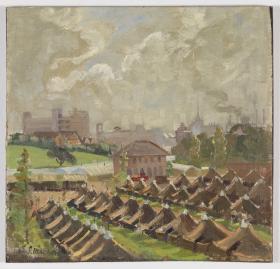
- Art and culture
Americans on campus: part of the Works in Focus series
Sydney Teacher’s College was co-located on the grounds of Sydney University where American Military Police units were billeted, describing the impact of the Americans on campus. Part of the Works in Focus series.
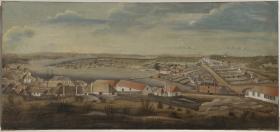
- Art and culture
‘A degree of neatness & regularity’: part of the Works in Focus series
Sydney — Capital New South Wales was painted around 1800 — its solid buildings and carefully laid out gardens refute the idea that it was a cesspit of depravity at a time when the city was associated with 'the awful depravity of human nature'.
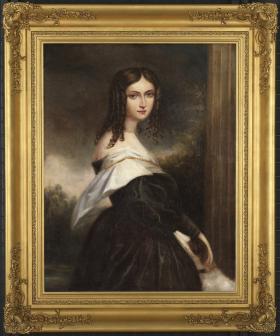
- Art and culture
After life: Maurice Felton’s portrait of 21-year-old Sophia
Looking at the portrait of this young woman, so full of life, you would never think it was painted after her death. But we know the sitter, posed so serenely in this picture, had died six months before it was exhibited at the artist’s Sydney studio. Part of the Works in Focus series.
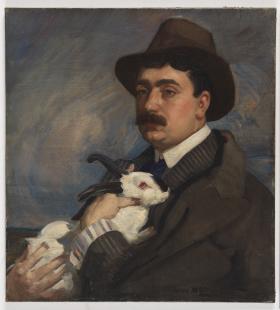
- Art and culture
A hint of eccentricity: a beautifully rendered, somewhat playful portrait
One of Australia’s most influential artists, George Washington Lambert (1873–1930), as part of the Works in Focus series.

